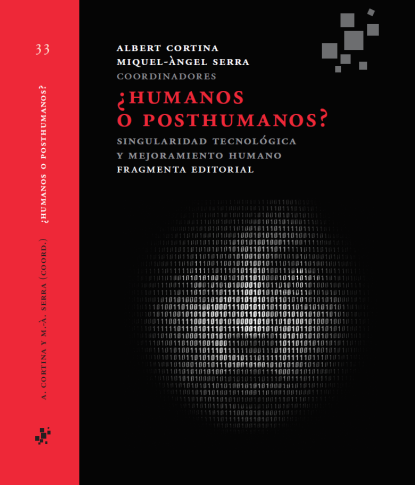What could happen if technologies like CRISPR/Cas9 were used to design human genomes at will? Could we artificially modify the evolutionary process? How long could our life be extended, assuming we had organ and tissue replacements available? Will we end up taking drugs or incorporating devices (wearables) into our bodies to enhance our physical and mental capacities? Could the so-called technological singularity, the fusion of biological and artificial intelligence, occur as is forecast for 2049 by transhumanists such as Ray Kurzweil (Google), and would that lead to posthuman beings, superior to the humans we know? 250 questions like these can be found in the book “Humans or posthumans? Technological singularity and human enhancement” (Fragmenta Editorial, 2015), which poses questions about what our future as a species will entail.

This book begins with a couple of articles published in the newspaper La Vanguardia by Albert Cortina (a lawyer and urban planner) and Miguel-Angel Serra, a biologist at the Department of Experimental and Health Sciences, Pompeu Fabra University (DCEXS-UPF), and continues with a debate from La Vanguardia Digital. The book contains the opinions of 213 people, from top scientists like the researcher Ricard Solé (UPF) to lay people, who all left comments over the subsequent 12 months. They talk about how NBIC sciences (nanotechnology, biotechnology, computer science and cognitive science) could design the future of humans and the planet. Techno-optimist visions, more on the side of the transhumanist movement, are opposed to most bioconservacionist positions, with a wide range of opinions in between. The book also provides a set of excellent images by David Molina that transmit more than just aesthetics, and will not leave anyone indifferent.






